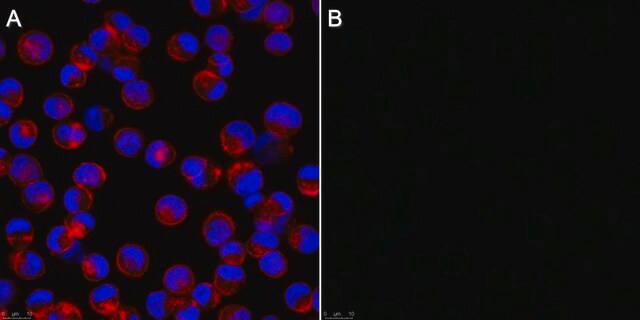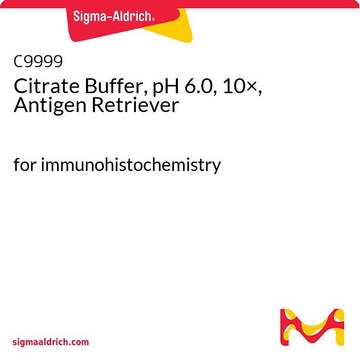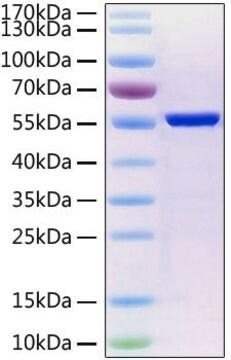MABS455
Anti-GLEPP1 Antibody, extracellular domain, clone 1B4
clone 1B4, 1 mg/mL, from mouse
Sinónimos:
Receptor-type tyrosine-protein phosphatase O, R-PTP-O, Glomerular epithelial protein 1, Protein tyrosine phosphatase U2, PTP-U2, PTPase U2, Ptpro
About This Item
Productos recomendados
origen biológico
mouse
forma del anticuerpo
purified antibody
tipo de anticuerpo
primary antibodies
clon
1B4, monoclonal
reactividad de especies
rat
concentración
1 mg/mL
técnicas
immunohistochemistry: suitable
western blot: suitable
isotipo
IgG2aκ
Nº de acceso NCBI
Nº de acceso UniProt
Condiciones de envío
wet ice
modificación del objetivo postraduccional
unmodified
Información sobre el gen
rat ... Ptpro(50677)
Descripción general
Inmunógeno
Aplicación
Western Blotting Analysis: A representative lot detected GLEPP1, extracellular domain in rat isolated glomeruli tissue lysate (Fukuda, A., et al. (2012). J Am Soc Nephrol. 23:1351–1363).
Calidad
Immunohistochemistry Analysis: A 1:50-250 dilution of this antibody detected GLEPP1, extracellular domain in glomeruli of rat kidney tissue.
Descripción de destino
Forma física
¿No encuentra el producto adecuado?
Pruebe nuestro Herramienta de selección de productos.
Código de clase de almacenamiento
12 - Non Combustible Liquids
Clase de riesgo para el agua (WGK)
WGK 1
Punto de inflamabilidad (°F)
Not applicable
Punto de inflamabilidad (°C)
Not applicable
Certificados de análisis (COA)
Busque Certificados de análisis (COA) introduciendo el número de lote del producto. Los números de lote se encuentran en la etiqueta del producto después de las palabras «Lot» o «Batch»
¿Ya tiene este producto?
Encuentre la documentación para los productos que ha comprado recientemente en la Biblioteca de documentos.
Nuestro equipo de científicos tiene experiencia en todas las áreas de investigación: Ciencias de la vida, Ciencia de los materiales, Síntesis química, Cromatografía, Analítica y muchas otras.
Póngase en contacto con el Servicio técnico








